There are several training systems for grapevines, each with its own set of advantages and suitability for different vineyard conditions and grape varieties. Some of the most common grapevine training systems include:
Vertical Shoot Positioning (VSP): VSP is a widely used training system that involves vertically positioning the main shoots of the grapevine along a trellis system. It allows for good airflow and sunlight exposure, making it effective for disease prevention and uniform ripening. VSP is commonly used in many wine regions.
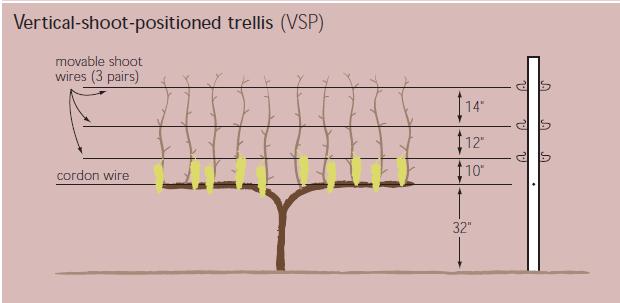
Geneva Double Curtain (GDC): The GDC system is characterized by a horizontally divided canopy with two curtains of foliage on either side of the vine. It provides good shading for the grape clusters and is often used in regions with hot climates.
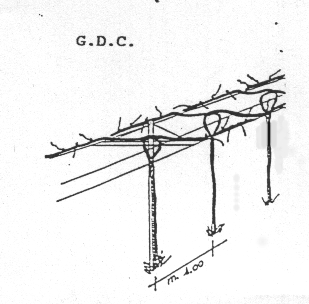
Scott Henry: The Scott Henry system is a modification of the VSP system. It includes two levels of cordon wires, with the upper level providing additional shade to the lower canopy. This system can improve airflow and light penetration while reducing sunburn risk.
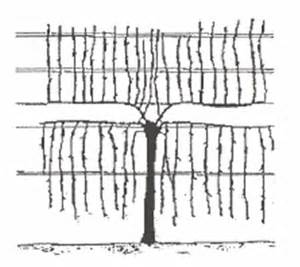
Pergola: The pergola training system involves training grapevines on an overhead trellis resembling a pergola. It is commonly used in regions with high humidity to promote airflow and reduce disease pressure. The canopy is spread out overhead, providing shade for the grape clusters.
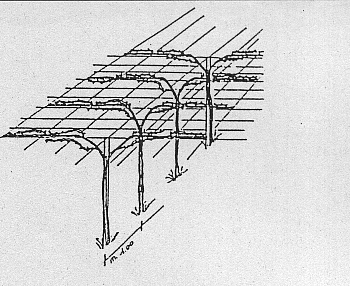
Guyot: The Guyot system is a traditional training method used in many wine regions, particularly in France. It consists of a single cordon (a horizontal branch) with one or two upright canes. It’s suitable for both spur-pruned and cane-pruned variations.
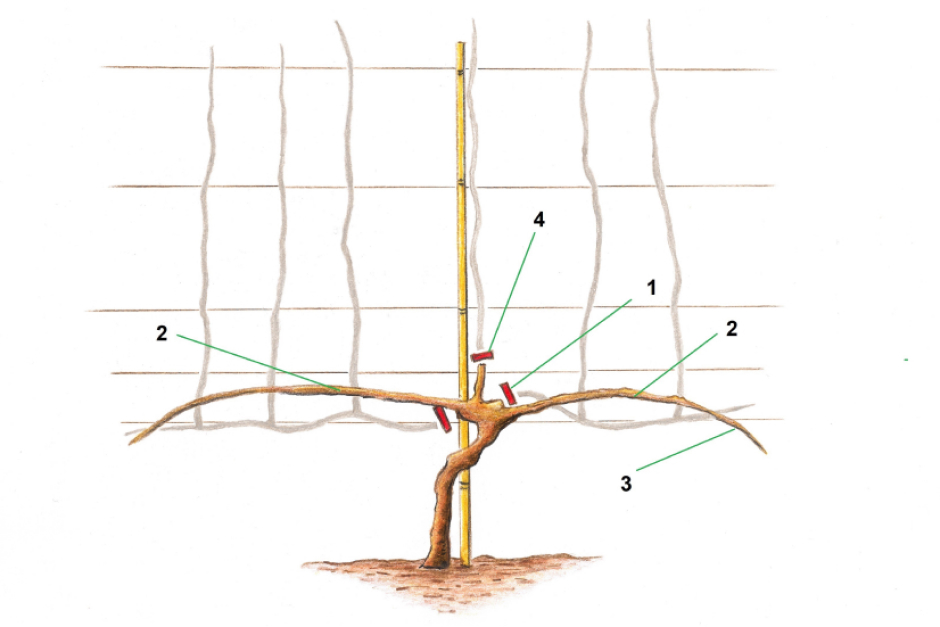
Spur Pruning: In spur pruning, short canes with a few buds are retained, and spurs are created on the main cordons. This method is often used in conjunction with various trellis systems, such as VSP or GDC.
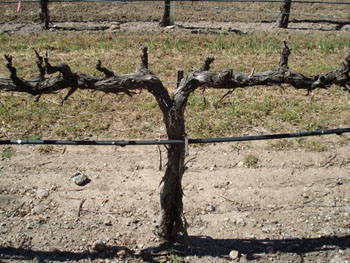
Cane Pruning: Cane pruning involves removing most of the previous year’s growth and selecting one or two long canes for the new season’s growth. It’s commonly used in regions with more severe winters, as it allows for flexibility in selecting fruitful canes.
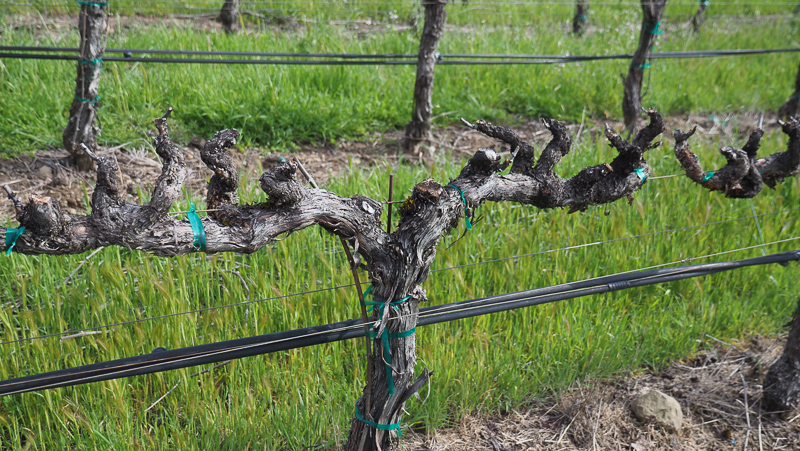
Bilateral Cordon: The bilateral cordon system involves training the grapevines with two cordons extending horizontally in opposite directions from the main trunk. This method is commonly used in regions with balanced growing conditions.
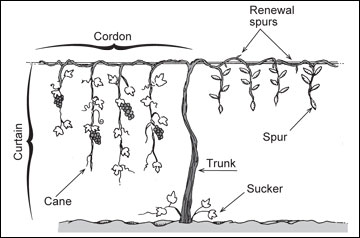
Head Training (Bushing): In head training, the grapevine’s main trunk is kept short, and the shoots are allowed to grow in a bush-like form. This system is often used in regions with low rainfall and where the vine can be partially buried for protection.
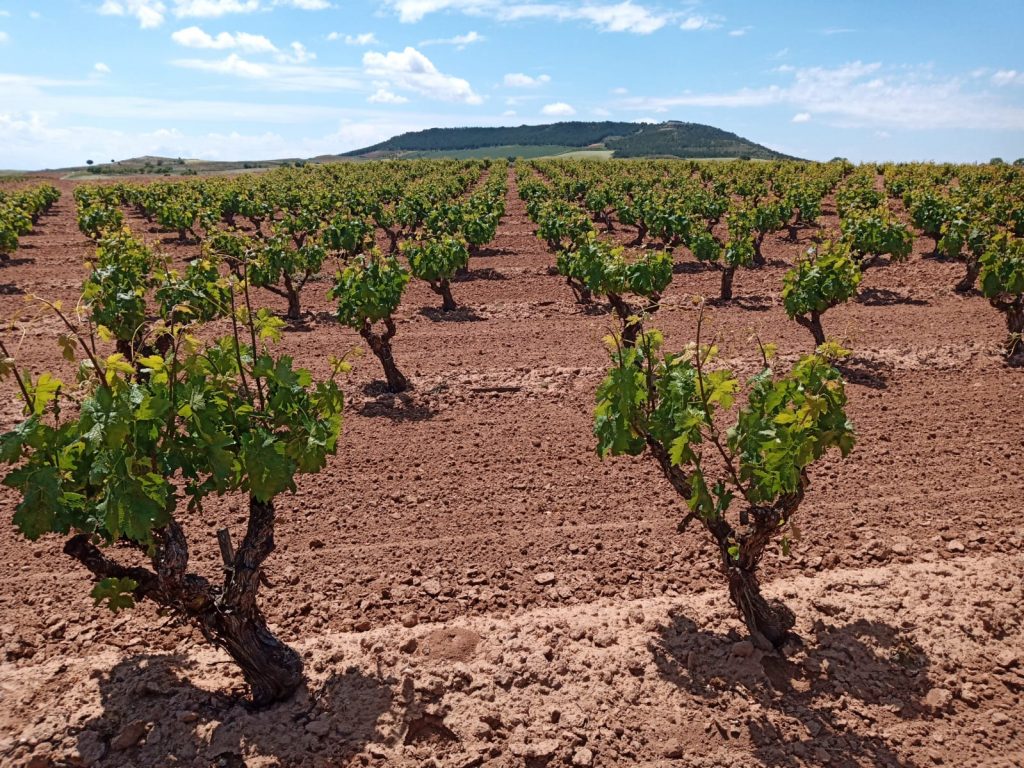
Espalier: Espalier training involves training the grapevines to grow flat against a wall, fence, or trellis. It’s often used in vineyards with limited space or for ornamental purposes.
The choice of training system depends on factors such as climate, grape variety, vineyard layout, and the desired style of grape production. Growers select the system that best suits their specific needs and the characteristics of their vineyard.